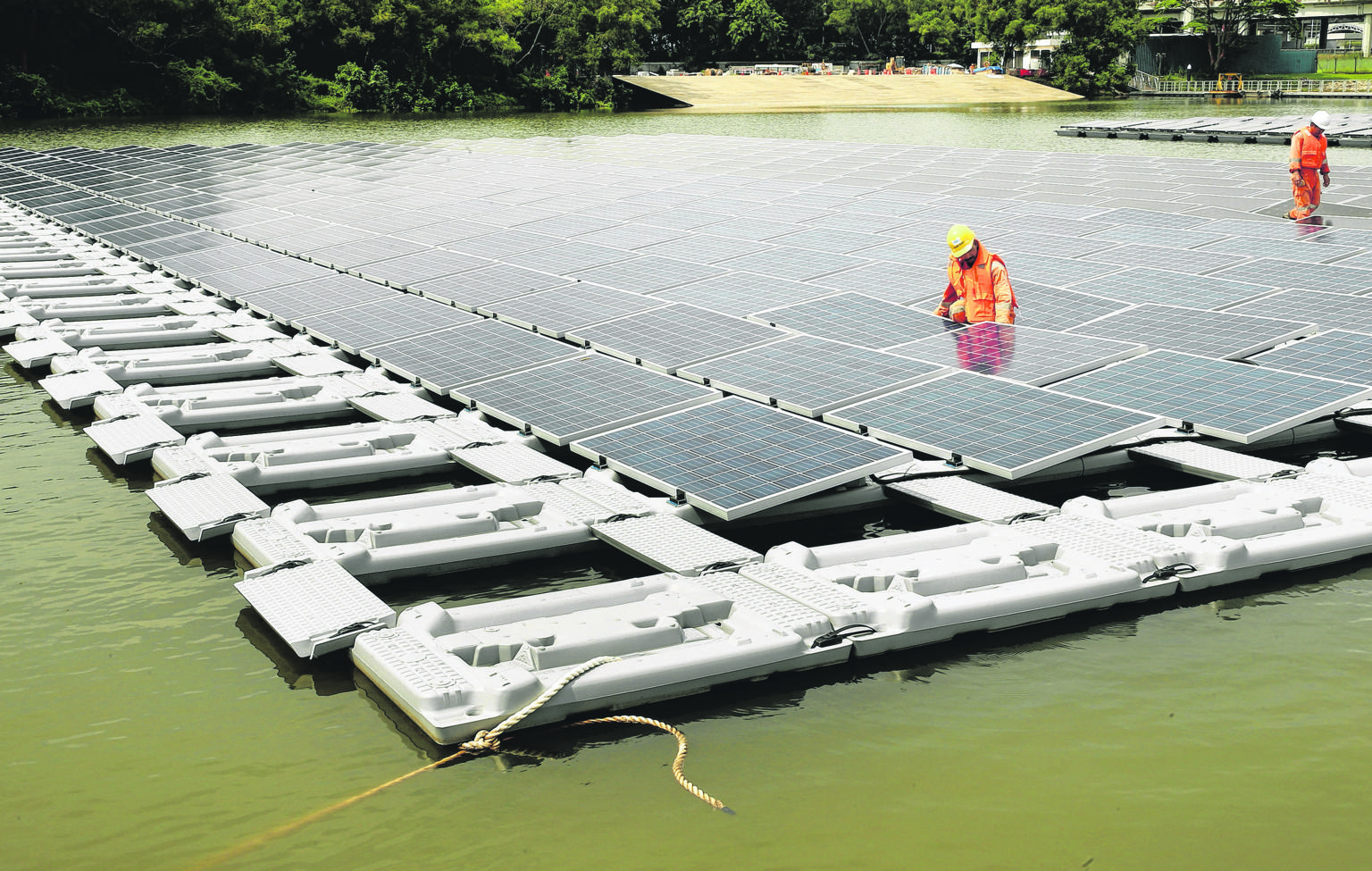PUB eyeing two more reservoirs to harness solar power
Tender called for studies on Bedok and Lower Seletar to facilitate use of such systems
Sign up now: Get ST's newsletters delivered to your inbox

The floating solar panel test bed at Tengeh Reservoir is the world's largest. PUB is looking at adding solar systems to Bedok and Lower Seletar reservoirs to power its energy-intensive water treatment processes in a greener way.
ST FILE PHOTO
Follow topic:
With little space to accommodate sprawling solar fields, Singapore is looking into installing solar panels on its water spaces.
Engineering studies for solar systems are being carried out at Tengeh and Upper Peirce reservoirs, and now national water agency PUB is looking at adding them to two more reservoirs here to power its energy-intensive water treatment processes in a greener way.
Yesterday, it called a tender for engineering studies to be carried out at Bedok and Lower Seletar reservoirs to facilitate the deployment of floating solar photovoltaic systems there.
A solar system will also be installed on the roof of Bedok Waterworks by this year, PUB said.
Energy is required throughout the water loop - from the pumping of raw water from reservoirs to waterworks, to the production of drinking water, treatment of wastewater, and production of Newater and desalinated water.
"There is potential to replace some of the grid energy needed by its operations with solar energy generated by solar panels installed on the roof spaces of existing installations and on the surfaces of the reservoirs," the agency said.
More than 95 per cent of Singapore's grid energy comes from the burning of natural gas. Though considered the cleanest form of fossil fuel, its combustion still contributes to the production of greenhouse gases.
Renewable energy from the sun, however, would reduce Singapore's reliance on fossil fuels. Its use is also in line with its target to reduce greenhouse gas emissions.
While most solar panels are deployed on land or rooftops, the use of water bodies is especially beneficial for land-scarce countries like Singapore. Solar systems would supply energy for the pumping of raw water from Bedok Reservoir to Bedok Waterworks for treatment, and the pumping of treated water into the water supply network for households.
Energy generated by the floating solar system at Lower Seletar Reservoir would go to pumping raw water for treatment, and for the transfer of raw water between reservoirs for operational purposes.
Having solar systems at both reservoirs would reduce PUB's carbon footprint by an estimated 1.3 kilotonnes of carbon dioxide annually, equivalent to taking about 270 cars off the road every year.
PUB also assured the public that the panels would be installed away from current water activity zones at both reservoirs.
The system at Lower Seletar Reservoir is slated to occupy about 1ha of water surface space, and the one in Bedok about 1.5ha. Each system will take up less than 2 per cent of total surface area at each reservoir.
PUB chief executive Ng Joo Hee said the agency is committed to making its operations more environmentally sustainable, adding: "The more renewables PUB can generate and use, the smaller our carbon footprint, and the greater our contribution to Singapore's climate change mitigation effort."
Dr Thomas Reindl, deputy chief executive of the Solar Energy Research Institute of Singapore (Seris), said that while solar photovoltaic systems in Singapore tend to be small in nature, the collective carbon reduction through all the installed solar power in Singapore is significant.
He added that floating solar systems are part of a growing trend globally - one that Singapore is leading in terms of research and development.
The Tengeh test bed, for example, which Seris operates with PUB and the Economic Development Board, is the world's largest.
Moreover, research into floating solar systems on reservoirs is a good first step in tapping the larger marine environment.
Dr Reindl told The Straits Times: "This has great potential for Singapore, due to the sheltered nature of the surrounding sea with no big waves."

